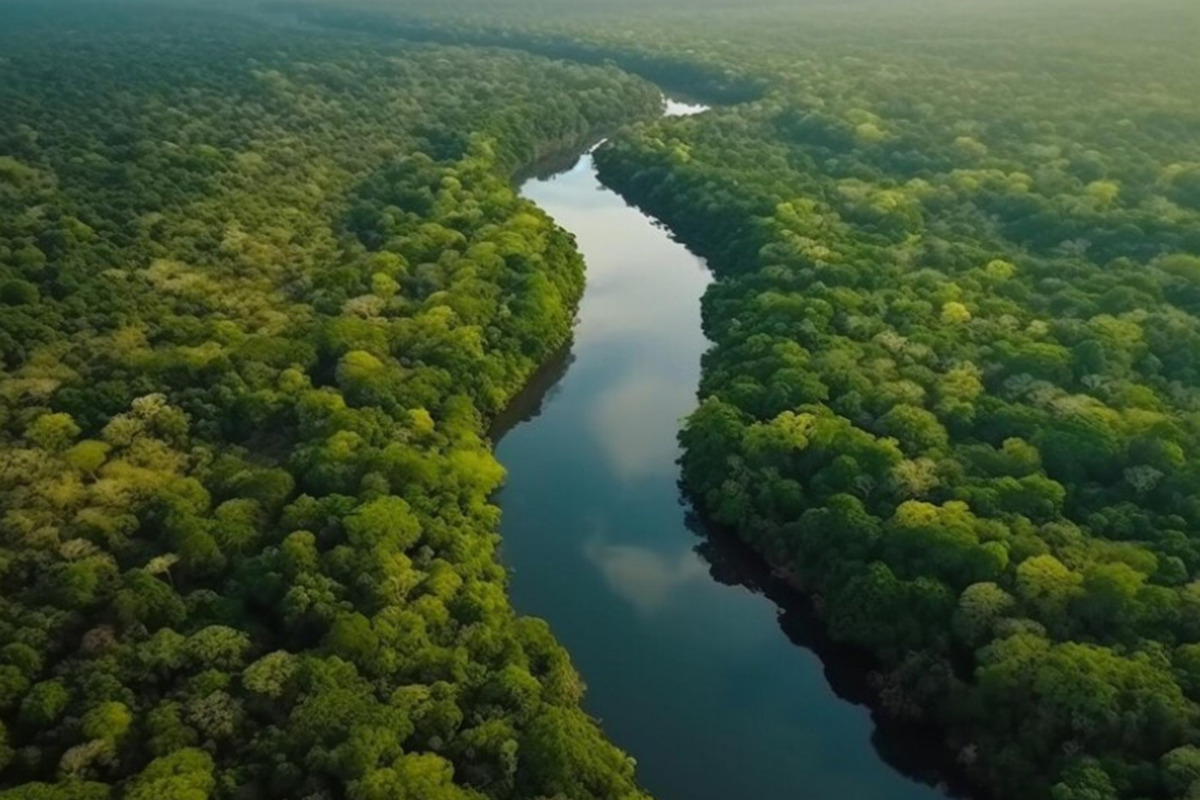New methods have made it possible to find structures from pre-Columbian times in the Amazon forests
[ad_1]

Two dozen previously unknown pre-Columbian earthworks have been discovered deep in the Amazon rainforest – and more than 10,000 such structures may still be waiting to be discovered, according to new research.
Throughout the Amazon basin, tropical forests spread their leafy branches over millions of kilometers, they say CNN. In the ground far below the treetops are ancient, long-hidden remains of human habitation. They are preserved in the form of ditches, paths and wells, sometimes forming geometric patterns. Known as earthworks, they were created by the indigenous peoples who lived in the area around 500 to 1,500 years ago.
The earthworks were associated with ceremonial and defensive uses, and they provide insight into what ancient settlements may have looked like.
Many Amazonian earthworks that predate the arrival of European colonizers are found in deforested areas. But researchers suspected that there were even more such places that are virtually invisible today, hidden under thick foliage. To find them, scientists analyzed images of the area taken using a remote sensing technique called light detection and ranging, or lidar. This airborne method probes the ground with laser pulses, measuring changes in distances to the ground. When the light is reflected, it is combined with other data to create the 3D terrain maps below.
“Lidar is really necessary to confirm the presence of structures, especially under forests,” says geographer Vinicius Peripato, a researcher at the Brazilian National Institute of Space Research in Sao Paulo.
The study authors also analyzed decades of data collection on tree species across the Amazon, looking for signatures of species known to have been domesticated by pre-Columbian peoples. The new study combined the efforts of 160 researchers and 80 years of data, combining lidar and tree distribution records in the Amazon into predictive models that estimated where unknown earthworks might be found.
A remarkable aspect of the work is that it contributes to the emerging consensus that the Amazon is “far from pristine wilderness” and that “the history of the indigenous peoples of the Amazon is as rich and dynamic as anywhere,” said Dr. Michael Heckenberger, professor of anthropology at the University Florida. Heckenberger, who was not involved in the study, has conducted research in the Brazilian Amazon since the 1990s, working with indigenous peoples in the Xingu region.
“The findings are not surprising, but follow a trend in Amazon research to increase the scale, density and impact of human activity on the Amazon forest,” Heckenberger told CNN. These results further demonstrate that the cultural heritage of indigenous peoples in the Americas and beyond is “remarkably dynamic and innovative,” he added.
At first, the authors weren’t sure whether the available lidar data would be useful for their project, Peripato told CNN. The scans were originally carried out to estimate the biomass of tropical forests, so the resolution was lower than usual for archaeological research.
“Initially we weren’t sure if we’d find anything,” Peripato said. “It was a bit of a gamble that fortunately paid off.”
Analysis of the data revealed 24 previously unknown earthworks in locations scattered throughout the Amazon basin. These places included a town with a square and a fortified village in the south; megalithic structures in the north; and rectangular and circular shapes, or geoglyphs, in the southwest.
The area covered by the lidar was just 0.08% of the Amazon rainforest, which extends over about 2.6 million square miles (6.7 million square kilometers). “But because the Amazon is so vast, we can’t just fly around everything with lidar,” admits Peripato.
To accurately predict how many more unseen excavations might exist, the team’s computer model needed much more data. So the scientists also mapped 937 known earthworks, asking the model to highlight potential earthwork sites that shared topographical features with previously identified sites.
The researchers further narrowed the list of possible hidden sites using tree survey data from 1,676 forest sites, looking for signs of any of the 79 species known to have been domesticated and cultivated by pre-Columbian crops.
The model estimates that there are likely more than 10,000 and perhaps more than 23,000 earthworks hidden beneath the Amazon canopy. This discovery suggests that known sites account for no more than 9% of what may remain beneath the cover of the Amazon rainforest.
[ad_2]
Source link








